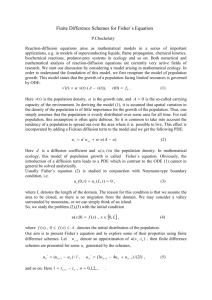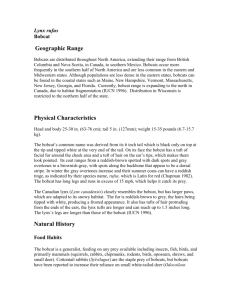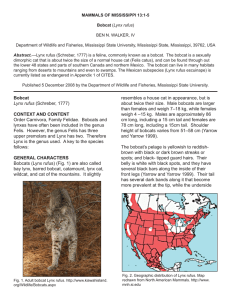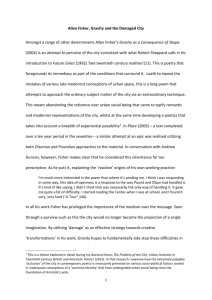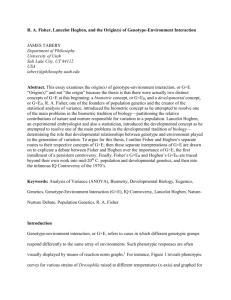September 2012 - Minnesota Trappers Association
advertisement
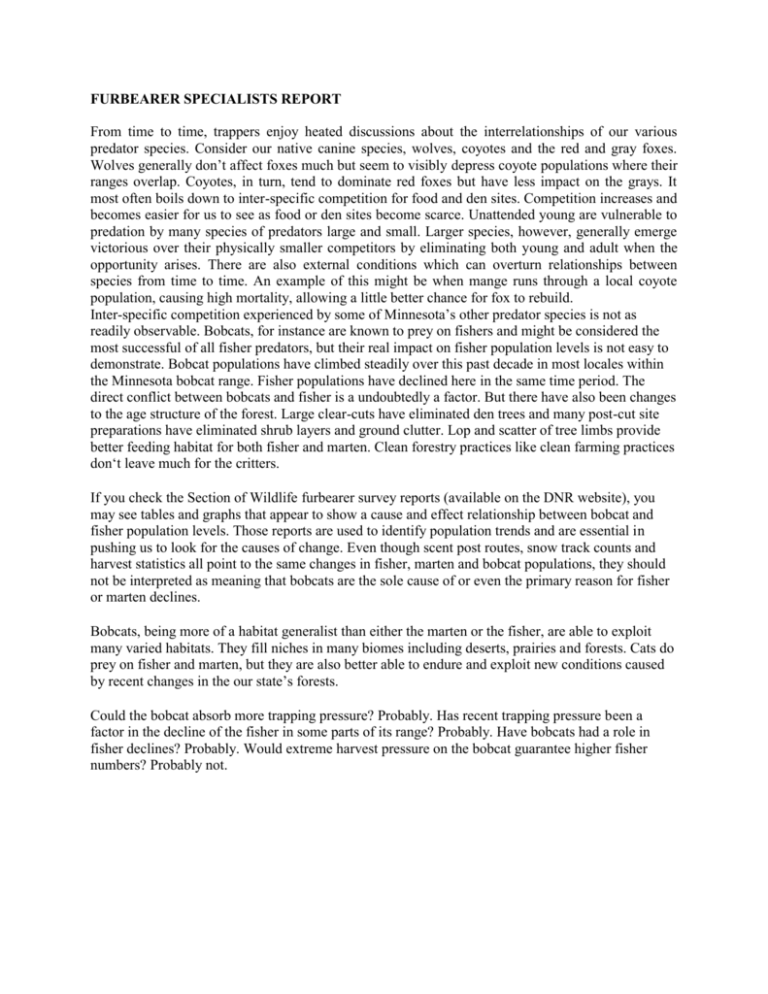
FURBEARER SPECIALISTS REPORT From time to time, trappers enjoy heated discussions about the interrelationships of our various predator species. Consider our native canine species, wolves, coyotes and the red and gray foxes. Wolves generally don’t affect foxes much but seem to visibly depress coyote populations where their ranges overlap. Coyotes, in turn, tend to dominate red foxes but have less impact on the grays. It most often boils down to inter-specific competition for food and den sites. Competition increases and becomes easier for us to see as food or den sites become scarce. Unattended young are vulnerable to predation by many species of predators large and small. Larger species, however, generally emerge victorious over their physically smaller competitors by eliminating both young and adult when the opportunity arises. There are also external conditions which can overturn relationships between species from time to time. An example of this might be when mange runs through a local coyote population, causing high mortality, allowing a little better chance for fox to rebuild. Inter-specific competition experienced by some of Minnesota’s other predator species is not as readily observable. Bobcats, for instance are known to prey on fishers and might be considered the most successful of all fisher predators, but their real impact on fisher population levels is not easy to demonstrate. Bobcat populations have climbed steadily over this past decade in most locales within the Minnesota bobcat range. Fisher populations have declined here in the same time period. The direct conflict between bobcats and fisher is a undoubtedly a factor. But there have also been changes to the age structure of the forest. Large clear-cuts have eliminated den trees and many post-cut site preparations have eliminated shrub layers and ground clutter. Lop and scatter of tree limbs provide better feeding habitat for both fisher and marten. Clean forestry practices like clean farming practices don‘t leave much for the critters. If you check the Section of Wildlife furbearer survey reports (available on the DNR website), you may see tables and graphs that appear to show a cause and effect relationship between bobcat and fisher population levels. Those reports are used to identify population trends and are essential in pushing us to look for the causes of change. Even though scent post routes, snow track counts and harvest statistics all point to the same changes in fisher, marten and bobcat populations, they should not be interpreted as meaning that bobcats are the sole cause of or even the primary reason for fisher or marten declines. Bobcats, being more of a habitat generalist than either the marten or the fisher, are able to exploit many varied habitats. They fill niches in many biomes including deserts, prairies and forests. Cats do prey on fisher and marten, but they are also better able to endure and exploit new conditions caused by recent changes in the our state’s forests. Could the bobcat absorb more trapping pressure? Probably. Has recent trapping pressure been a factor in the decline of the fisher in some parts of its range? Probably. Have bobcats had a role in fisher declines? Probably. Would extreme harvest pressure on the bobcat guarantee higher fisher numbers? Probably not.



